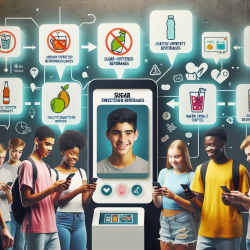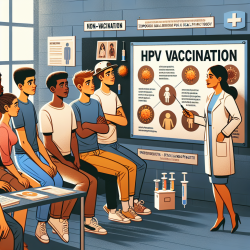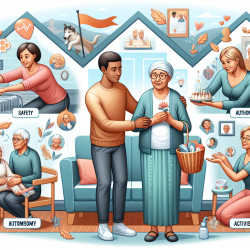Introduction
In the modern era, technology has become an integral part of adolescents' lives, providing a unique opportunity to influence their health behaviors positively. The scoping review titled "Technology-Based Interventions to Reduce Sugar-Sweetened Beverages among Adolescents" highlights the potential of digital tools in addressing the alarming rise in sugar-sweetened beverage (SSB) consumption among young individuals. This blog aims to explore how practitioners can leverage these insights to enhance their interventions and encourage further research in this vital area.
The Growing Concern of SSB Consumption
Sugar-sweetened beverages, including sodas, energy drinks, and sweetened teas, are significant contributors to excessive sugar intake among adolescents. The World Health Organization (WHO) recommends limiting free sugar intake to less than 10% of total calorie intake, yet many adolescents exceed this threshold, leading to increased risks of obesity, diabetes, and other health issues. The review by Ezike et al. (2023) maps out technology-based interventions that show promise in curbing this trend.
Key Findings from the Scoping Review
The review identified four primary technology-based interventions: smartphone apps, online tools, text messaging, and social marketing strategies. Each approach offers unique advantages in engaging adolescents and promoting healthier beverage choices:
- Smartphone Apps: Apps provide a convenient and engaging platform for tracking consumption, setting goals, and receiving personalized feedback. Studies showed significant reductions in SSB intake and improvements in related health behaviors.
- Online Tools: Web-based interventions offer anonymity and accessibility, making them appealing to adolescents. These platforms can deliver educational content and track progress effectively.
- Text Messaging: SMS interventions are cost-effective and can reach a broad audience. They facilitate discreet communication and have shown success in promoting healthy dietary changes.
- Social Marketing: This approach uses peer influence and community engagement to promote healthier choices. Social marketing campaigns have effectively reduced SSB consumption and increased physical activity among adolescents.
Implications for Practitioners
For practitioners working with adolescents, integrating technology-based interventions into their practice can enhance the effectiveness of health promotion efforts. Here are some strategies to consider:
- Adopt Multi-Platform Approaches: Combining different digital tools can cater to diverse preferences and increase engagement. For instance, using apps alongside text messaging can reinforce messages and provide continuous support.
- Focus on Personalization: Tailoring interventions to individual needs and preferences enhances motivation and adherence. Personalized feedback and goal-setting can significantly impact behavior change.
- Leverage Peer Influence: Social marketing strategies that involve peer leaders can create a supportive environment and encourage healthy behaviors through positive peer pressure.
- Encourage Long-Term Engagement: Sustained behavior change requires ongoing support. Practitioners should consider follow-up interventions and continuous engagement to maintain positive outcomes.
Encouraging Further Research
While the review provides valuable insights, there is a need for further research to explore the long-term effectiveness and cost-efficiency of these interventions. Future studies should focus on larger sample sizes, diverse populations, and extended follow-up periods to better understand the sustainability of behavior change.
Conclusion
Technology-based interventions hold significant promise in reducing SSB consumption among adolescents, offering a scalable and engaging approach to promoting healthier lifestyles. Practitioners are encouraged to incorporate these tools into their practice and contribute to the growing body of research in this field. By leveraging technology, we can make meaningful strides in addressing this public health challenge and improve outcomes for young individuals.
To read the original research paper, please follow this link: Technology-Based Interventions to Reduce Sugar-Sweetened Beverages among Adolescents: A Scoping Review.










